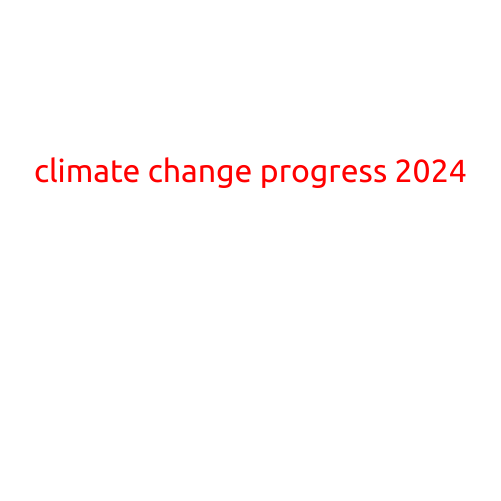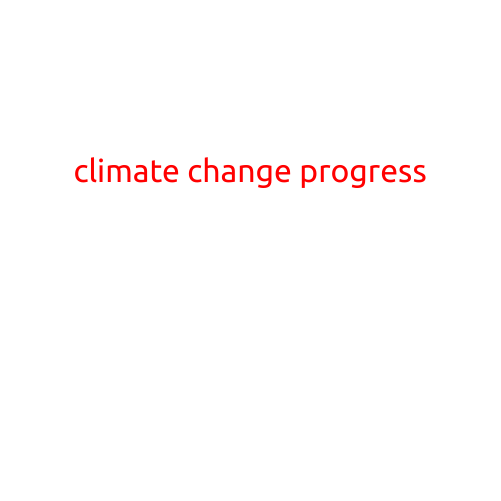
Climate Change Progress 2024: A Year of Ambitious Goals and Steady Progress
As the world continues to grapple with the devastating impacts of climate change, 2024 marks a critical year in the global effort to mitigate its effects. With the signing of the Paris Agreement in 2015, countries committed to limit global warming to well below 2°C and pursue efforts to limit it to 1.5°C above pre-industrial levels. While progress has been steady, the pace of change needs to accelerate significantly to meet these targets.
Renewable Energy Dominance
One of the most significant indicators of climate progress is the rapid growth of renewable energy. In 2024, solar and wind power are expected to account for over 30% of global electricity generation, up from just 10% in 2015. This shift is driven by declining costs, improved technology, and increased investment. The United States, China, and India are leading the charge, with the former two countries committing to generate over 50% of their electricity from renewable sources by 2035.
Electric Vehicle Milestones
The transportation sector is another area where significant progress is being made. By 2024, electric vehicles (EVs) are expected to account for over 10% of global car sales, up from just 2% in 2015. Governments around the world are implementing policies to encourage the adoption of EVs, such as tax incentives, subsidies, and investment in charging infrastructure. Norway has already exceeded 50% EV market share, and countries like China, the United States, and the European Union are close behind.
Carbon Pricing and Financial Incentives
Carbon pricing, a critical mechanism for reducing emissions, is also making significant strides. Over 60 countries and cities have implemented carbon pricing mechanisms, covering over 20% of global greenhouse gas emissions. In 2024, the European Union is set to launch its carbon border adjustment mechanism, which will put a price on carbon imports and exports to level the playing field for European industries. This move is expected to boost the global carbon price, making it more expensive for countries and corporations to emit greenhouse gases.
Sustainable Agriculture and Forestry
Agriculture and forestry are critical sectors in the fight against climate change, as they account for around 24% of global emissions. In 2024, the use of synthetic fertilizers is expected to decline, replaced by more sustainable practices like regenerative agriculture and cover crops. The UN’s Food and Agriculture Organization is working with member states to promote these practices, which can reduce emissions by up to 50%.
Climate Resilience and Adaptation
As the impacts of climate change become more pronounced, climate resilience and adaptation are increasingly critical. In 2024, the Global Climate Resilience Fund is set to launch, providing financing for climate-resilient infrastructure projects, climate-smart agriculture, and disaster risk reduction. The European Union has also pledged to dedicate 25% of its budget to climate action, with a focus on adaptation and resilience.
Challenges and Opportunities
While progress is being made, the climate crisis remains a pressing global challenge. Extreme weather events, like hurricanes, wildfires, and droughts, continue to devastate communities and economies. The ongoing pandemic has also disrupted climate efforts, highlighting the need for more robust international cooperation and policy coordination.
However, the rapid progress being made in climate change mitigation and adaptation also presents opportunities for innovation, job creation, and economic growth. The clean energy sector alone is expected to generate over $1 trillion in investment by 2050, supporting millions of jobs globally.
Conclusion
As the world marks the Climate Change Progress 2024 report card, it is clear that significant strides have been made in the fight against climate change. Renewable energy, electric vehicles, carbon pricing, and sustainable agriculture are just a few examples of the progress being made. However, there is still much work to be done to meet the Paris Agreement targets and avoid the catastrophic impacts of climate change. By 2024, global leaders must continue to accelerate their efforts to reduce emissions, promote climate resilience, and ensure a sustainable future for all.





